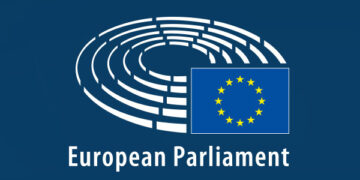What will Donald Trump’s election as US President mean for trade? Robert Basedow writes that if the new administration stays true to its word, US trade policies will usher in a period of great instability in global economic governance and will have important implications for both the EU and the UK.
On 6 November, Donald Trump won a second term as President of the United States. Whereas at the beginning of his first presidency in 2017, Trump’s win was widely seen – even within his own party – as a historical accident and that voters had not known what they were signing up to in terms of policy substance and style, this time around US voters knowingly and clear-sightedly chose Trump and his agenda.
Trump, for better or for worse, thus received a firm democratic mandate and will enter the office in a stronger and better prepared position than in 2017. The fact that the Republicans seem set to gain a supermajority in Congress will further embolden and empower the incoming Trump administration. So what does Trump’s win mean for trade policy from an EU and UK perspective?
US protectionism
To answer this question, we need to first assess Trump’s stated trade policy goals. The Republican election platform lists a number of trade policy goals for the 47th presidency.
First, US trade policy shall discriminate against foreign products, workers, and services. This goal is reiterated numerous times under the headings “America first”, “Buy American”, “Hire American”, and “Becoming a manufacturing superpower”. It alludes to new tariffs and non-tariff barriers that will shelter US firms and workers from foreign competition. The platform in particular mentions US car manufacturers as intended beneficiaries of US protectionism.
Secondly, and relatedly, the incoming US presidency aims to continue with efforts at rebalancing US trade flows. In more concrete terms, this seems to call for policies that reduce US imports and/or increase US exports to phase out the US trade deficit.
During his election campaign, Trump at times suggested the introduction of a new (non-World Trade Organization conforming) baseline tariff of 10% on all goods – for context: most advanced economies have an average tariff of about 3% and indeed lower tariffs on most non-agricultural imports – and he even suggested 100% to 200% tariffs for certain types of products such as cars. The platform also suggests that Trump will seek to renegotiate “unfair” trade deals and crack down on allegedly “unfair” trading practices of partner countries.
It needs mentioning here that – apart from triggering high inflation – the objective to fully rebalance US trade is unrealistic and misguided as long as the US wants to remain at the core of global financial markets and keep the US dollar the world’s main reserve currency. A significant share of the US trade deficit is tied to global demand for dollars and balancing US trade would mean foregoing US dominance in global finance (explained in detail here).
Third, the platform explicitly states that US trade policy shall promote on-shoring and secure strategic independence from China. Trump wants to revoke China’s most-favoured nation (MFN) status under the rules of the World Trade Organization (WTO), bar Chinese actors from buying real estate and US firms, and phase out imports of “essential” goods.
In many regards, these measures constitute a continuation of existing US policies – such as Foreign Direct Investment screening, export controls, and the securitisation of US supply chains – yet the objective of ending China’s MFN status is noteworthy. The US unilaterally revoking China’s MFN status would be incompatible with WTO law and shake the global trade regime to its very core.
EU and UK trade policy
What do these objectives imply for EU and UK trade policy in the coming years? At the most general level, the WTO will take an existential blow. The Republican platform leaves little doubt that the US leadership is barely attached to the multilateral rules-based trading regime that emerged after World War II and seems content to go it alone and use its geopolitical power to extract trade policy concessions from others through bilateral and regional deals.
If true, US trade policies will usher in a period of great instability, unpredictability, and far-reaching institutional and normative changes in global economic governance. The WTO is likely to suffer a further loss in importance and free trade agreements may become even more important governance tools. Most importantly, this dynamic will likely further contribute to the formation of geoeconomic blocs in the world economy centred on individual powers.
In sum then, the EU and UK are likely to face a more volatile, power-based and fragmented world economy. Hence, we should expect the EU and the UK to step up cooperation with each other and to strike or finalise new comprehensive and deep trade agreements with key economies such as Mercosur, Africa and India.
In view of transatlantic trade, the EU and UK should expect higher tariffs – especially on cars – when exporting to the US. Further, US policies will nudge European firms to move more of their production into the US economy to satisfy “Buy American” and “Hire American” policies.
Joe Biden’s Inflation Reduction Act (IRA) has already given Europeans and others a taste of what is to come. These developments may reduce profit margins and lead to lay-offs in Europe and other regions, while fuelling employment but also inflation in the US. A stronger presence of European firms in the US may consolidate the US long-arm jurisdiction and regulatory power in world markets unless foreign firms decide to limit their exposure to the US economy.
The environment and national security
The EU is, furthermore, likely to encounter strong headwinds with regard to its Carbon Border Adjustment Mechanism (CBAM) and its deforestation regulation. Whereas the CBAM requires importers to buy certificates from the EU’s internal emission trading scheme for emissions embedded in goods produced abroad, the deforestation regulation requires importers to show that imported agricultural commodities were not produced on recently deforested lands.
The US – and other countries – have criticised the EU for alleged green protectionism and vowed to take counteractions. Under Trump 2.0 with his pronounced anti-environmental policy stance, the US is likely to take more aggressive actions to challenge the EU and its self-styled global environmental leadership. Taking into consideration the fragile political and economic conditions in many EU member states, the EU may well end up softening its policies under US pressure to the detriment of the environment.
In contrast, the US under Trump 2.0 is likely to push the EU and/or member states to adopt more and more stringent instruments and policies on geoeconomics and national security in view of uncoupling China from western economies and technology. More stringent investment screenings and export controls may feature prominently.
European business will thus need to take the security turn in trade policy even more seriously. US pressure on the Netherlands to cut off Chinese semiconductor producers from ASML technology illustrates what is likely to come for more firms and more sectors. Hence, the development of a fully-fledged EU export control policy to better coordinate member state efforts and manage US pressures should figure highly on the agenda of the incoming European Commission. Indeed, external pressures historically have often been a key driver for the consolidation of EU policies.
Instability, tensions and change
Lastly, Trump seems set to continue with the large-scale industrial policies of the Biden administration, though certainly without the environmental narrative. US subsidy programmes will trigger additional trade tensions between the US, the EU and the UK, fuelling calls for countervailing measures as well as demands for similar programmes in Europe and elsewhere.
Apart from putting pressure on public budgets, the incoming European Commission and member states may start discussions on reforming EU state aid rules. A thorny issue with potentially considerable redistributive consequences in the single market between rich and poor member states. The UK may be better placed to react to these pressures, yet has very limited fiscal wiggle room and may run into conflicts with the EU if its industrial policy and state aid rules start markedly differing from EU policy and rules.
In sum, Trump 2.0 heralds a period of considerable international economic instability, tensions and change. Trade policy will continue to become more geopoliticised and protectionist. Firms will have to spend more resources to comply and navigate diverging policy requirements across jurisdictions, while consumers may pick up the bill in the form of inflation and unemployment. Whereas the EU can partially mitigate these pressures due to its large market size, the UK can leverage its policy flexibility while keeping in mind the need to manage its relationship with the EU, which remains the UK’s key economic and political partner.
Note: This article gives the views of the author, not the position of EUROPP – European Politics and Policy or the London School of Economics. Featured image credit: Aaron of L.A. Photography / Shutterstock.com


































Discussion about this post